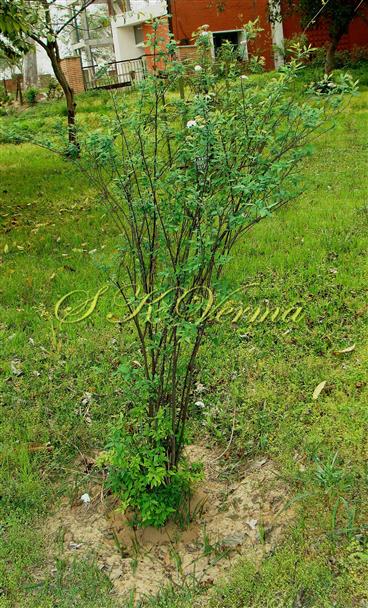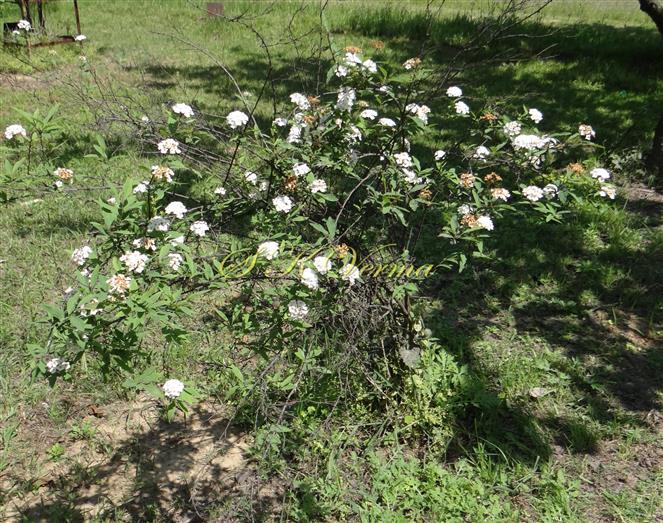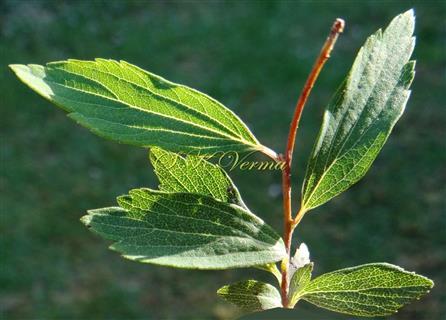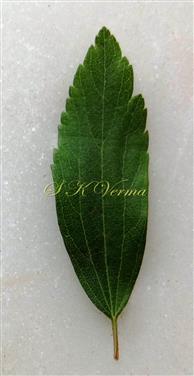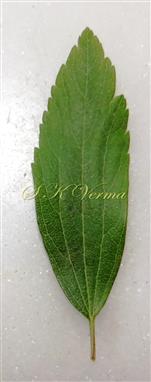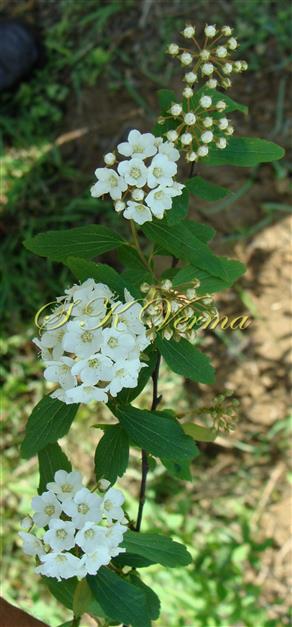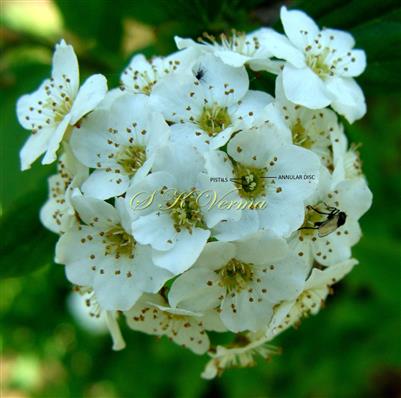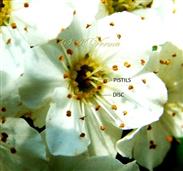SPIRAEA
Spiraea
L., Sp. Pl. 1: 489. 1753; Gen. Pl. ed. 5: 216. 1754; Parker, For. Fl. Punj. ed. 1: 211. 1918 (Reprint 1973); Lingdi & Alexander, Fl. China @ eFloras.org 9: 4; Lis, Fl. North Amer. @ eFloras.org vol. 9.
Deciduous shrubs or perennial herbs, 1-4 m. Stems many, 5-20+, usually erect to ascending or arching; bark reddish to dark brown, gray or gray-black; long and short shoots present. Leaves alternate, usually exstipulate, shortly petiolate, simple; leaf blade ovate, obovate, oblanceolate, suborbiculate, rhombic, elliptic or linear-lanceolate, veins usually pinnate, rarely 3-5 from base, margin serrate or incised, sometimes lobed, rarely entire. Flowers in terminal umbels, umbel-like racemes, corymbs or panicles, white or pink, 2-15 mm across, bisexual, rarely unisexual; bracts and bracteoles present or not; pedicellate. Flowers opening before or after foliation, actinomorphic, bisexual. Hypanthium cupulate or turbinate. Sepals (calyx lobes) 5, valvate or slightly imbricate, usually shorter than hypanthium, persistent. Petals 5, imbricate or contorted, usually longer than sepals, ovate or obovate, suborbiculate to orbiculate, white or pink. Stamens 15-60, in 2-4 series borne between disk and petals, free or connate. Disc present at mouth of hypanthium, annular, lobed. Carpels 3-8, usually 5, free or sometimes connate below, ovules (2-)- several per carpel, pendulous; styles terminal or sub terminal. Stigma capitate or disciform. Fruit aggregated follicles, 4 or 5, coriaceous or bony, often dehiscent along adaxial suture; hypanthium persistent. Seeds 2-4 per follicle, minute, linear to fusiform to oblong; testa membranous.
80 species
Spiraea cantoniensis
Spiraea cantoniensis
Lour., Fl. Cochinch. 1: 322. 1790; Parker, For. Fl. Punj. ed. 2: 211. 1918 (Reprint 1973); Fl. China @ eFloras.org 9: 62; Fl. North Amer. @ eFloras.org vol. 9.
Deciduous shrub, up to 2 m tall. Stems arching branched; branchlets dark red brown, turning gray brown when old, slender, terete, glabrous or pubescent; buds ovoid, small, with several scales, glabrous or puberulous apically or on margin. Leaves alternate, exstipulate; petiole 4-10 mm long, glabrous; leaf blade dark green adaxially and grey-blue abaxially, rhombic- lanceolate to rhombic-oblong, 2-8 cm x 0.5-2 cm, glabrous or abaxially pubescent, membranous to chartaceous, base cuneate to obtuse, margin coarsely serrate or irregularly 3-fid to slightly lobed distally, apex acute, venation pinnate with 3 (-5) nerves nearly parallel from base, simple craspedodromous, secondary veins not prominent. Inflorescence mostly axillary, umbels or corymbs, pedunculate, 3-5 cm x 3-5 cm, many-flowered; pedicels 8-15 mm; bracts linear to lanceolate, 2-3 mm, glabrous or pubescent. Flowers actinomorphic, bisexual, +/-10 mm in diameter. Hypanthium campanulate, glabrous or pubescent outside. Sepals (calyx lobes) 5, triangular or ovate-triangular, 1-1.5 mm x 1.5-2 mm, erect in fruit, apex acute or shortly acuminate, persistent. Petals 5, free, white, suborbicular or obovate, 2.5-4 mm x 3-4.5 mm, apex obtuse or emarginate. Stamens 20-28, shorter than to nearly equating petals. Disk annular, lobed, lobes unequal, suborbicular, apex emarginate. Carpels 5, free, ovules many per carpel, pendulous; styles terminal, usually divergent. Stigma capitate. Fruits aggregated follicles, 5, often dehiscent, spreading, glabrous.
Common Names: Reeves Spiraea, Bridal wreath Spiraea, Double White May, Cape May, May Bush
